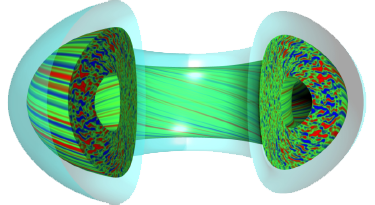Speaker
Description
This paper summarizes the development of software tools to detect the approach to the L-H transition in ITER PFPO (Pre-Fusion Power Operation) scenarios. In particular, it describes to what extent the physical phenomena associated with the L-H transition can be characterized using the set of diagnostics available in PFPO. The H-mode is associated with the development of an edge transport barrier, which guarantees higher temperatures and densities at the plasma core with strong gradients at the edge. At the same time as the confinement improves, the power distribution on the first wall and divertor targets changes. These effects can be detected by temperature and density diagnostics, as well as by diagnostics of energy deposition on the plasma facing components. The list of relevant ITER diagnostic systems includes microwave diagnostics (reflectometry, refractometry, ECE), interferometry, spectroscopic diagnostics, thermography, bolometry and Langmuir probes.
Before the start of ITER operation and the availability of experimental data, synthetic diagnostics can be used to simulate measurements given the plasma parameters from predictive simulations and the configuration of each diagnostic system. Synthetic diagnostics can be used to support diagnostic design by modelling their performance in various scenarios, to support the development of controllers, and for physics studies such as in this paper. The assessment of the L-H transition detection uses advanced core and edge transport solvers like ASTRA, JINTRAC and SOLPS-ITER. The simulation results and the machine descriptions are unified within the IMAS (Integrated Modelling and Analysis Suite) framework and the synthetic diagnostics are adapted to use standard Interface Data Structures (IDSs) for data exchange. The paper will cover the development and application of the ITER synthetic diagnostics workflow, including components like DIP_TIP (interferometry), CASPER (spectroscopy) and ECRad (ECE).
| Country or International Organisation | France |
|---|---|
| Affiliation | ITER Organization |

